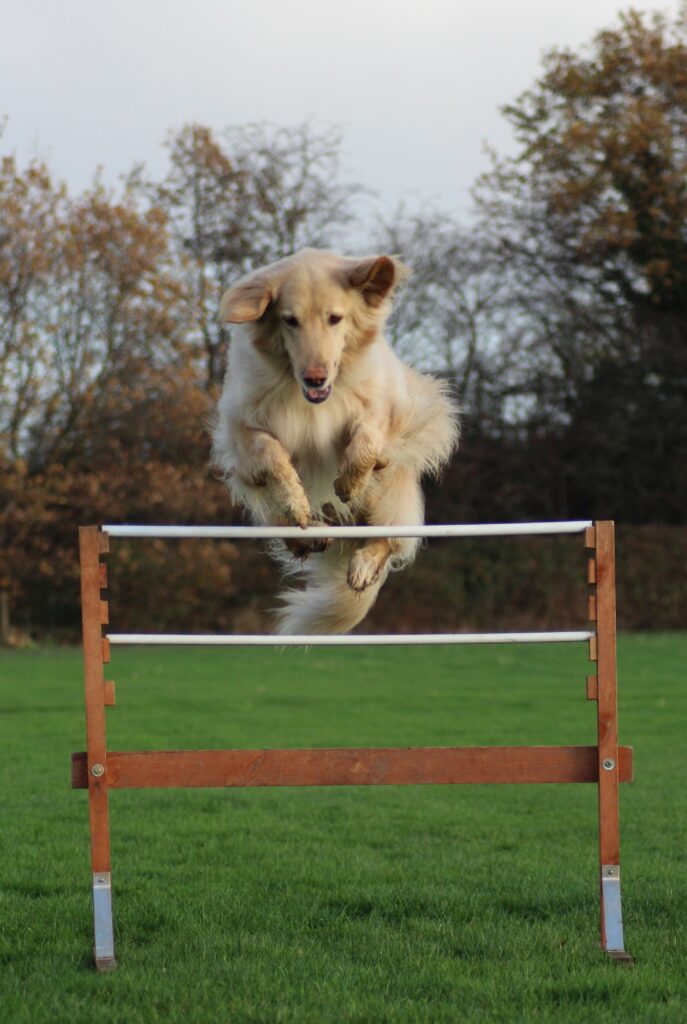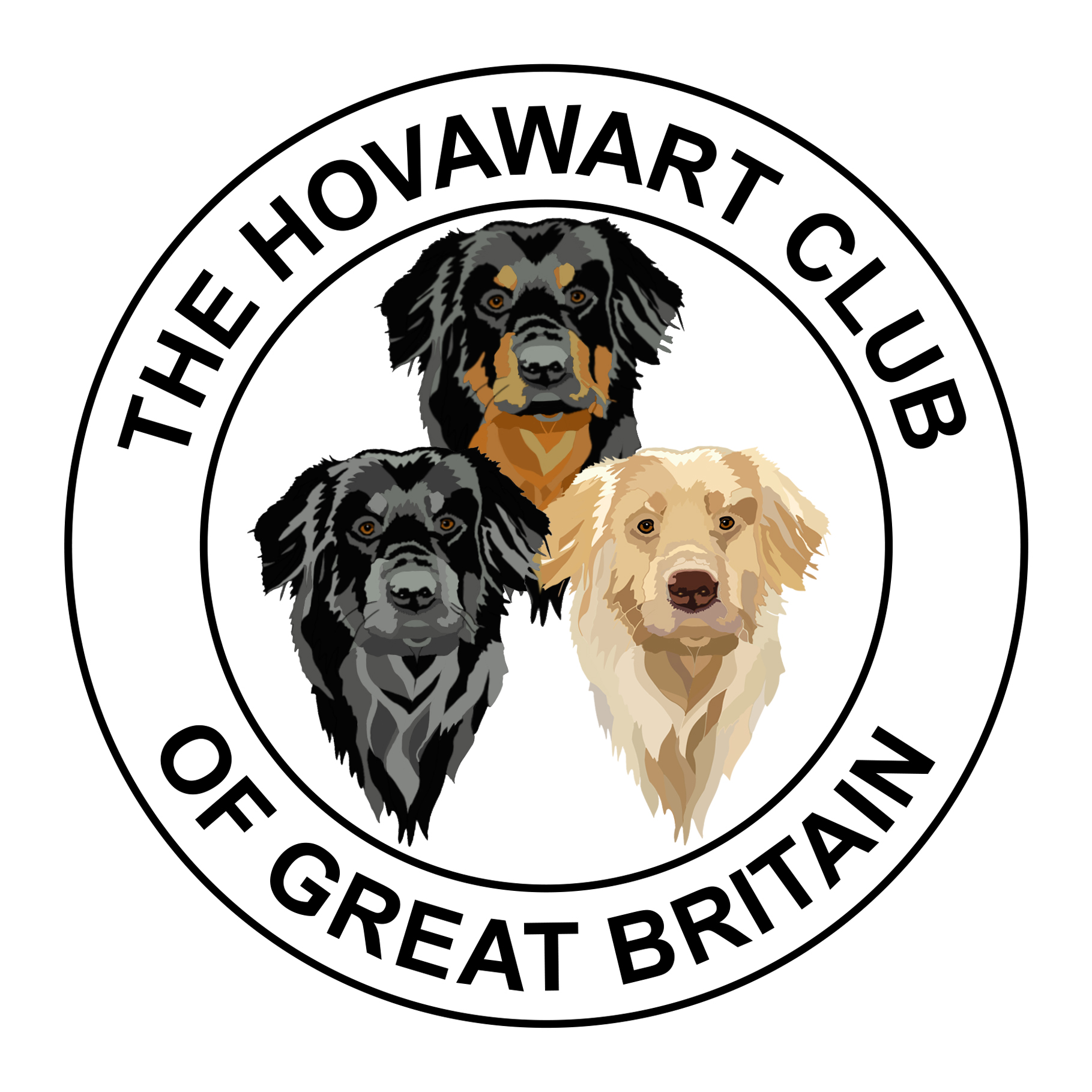Working Trials consist of groups of tests at different levels of competition referred to as “stakes”. In Working Trials, you do not loose marks, you have to earn them, and at the end of the stake all the marks are added together.
There are five stakes, beginning with CD (Companion Dog) then UD (Utility Dog), WD (Working Dog), TD (Tracking Dog) and PD (Patrol Dog). Each of these stakes are at two levels, Open and Championship. Each stake is made up of sections, there are 4 in CD, Control (heel work on and off lead, recall and sendaway), Stays (sit and down), Agility (clear high jump, long jump and scale) and Retrieving & Nosework (retrieve a dumbbell and search a square for articles). For UD, steadiness to gunshot is added to the Control section, and a track to the Nosework section. WD has no extras, but the standard needed is higher. The same goes for TD, but the track is older and longer. PD has an extra section named Patrol which tests courage, quartering the ground, search & escort and pursuit detention and control of a “criminal”, commonly called “manwork”. Marks are awarded for each element of each section, and to qualify, each section has to reach a certain total mark. This may sound rather daunting, but the dogs do love the training , and some even revel in the competition!
Working Trials are not so well known as some other canine activities and can be difficult to find out about. The way to start is to find a Working Trials Club (be prepared to travel!). Your dog must be registered with the Kennel Club, and even if you go for training once a month be prepared to practice at home. Each discipline must be broken down to little simple procedures and only when your dog is confident with each should the exercises be put together. It isn’t a glamourous sport and training, tracking, and searching go on whatever the weather, so not for the faint-hearted. You will need good outside clothing, good boots and be prepared for whatever the weather throws at you.
A reasonable level standard of general obedience is required before you get started, although apart from the sit and down stays your dog will be tested individually. Playing with your puppy is ideal, and getting youngsters to pick up things and give them to you in exchange for a treat will serve you well for the scentwork. Jumping comes later, when bones have developed and must be taught carefully.

I have trained four hovawarts for Working Trials and found that the first stake (CD) is well within their capability with patience and determination, and boy don‘t they love the training! I would even say that nosework ability seems to be part of the Hovawart DNA. Like everything else in life, the higher you get up the stakes the harder it becomes, but the dogs are very capable, so are you? Elaine Sharpe
The Kennel Club has a page dedicated to starting out in Working Trials, here you can find an instructor/club and it details what you need to know to take part.

Reflections on a First Competition Track: Sharon Lord sends her thoughts after her first competitive track

Sharon Lord’s Inka jumping in Working Trials. However she much prefers scent work and now concentrates on tracking (see below)
I decided it was akin to driving a classic car on the London to Brighton rally. You know the start and end points but how you get there is an unknown journey!
Let me start with my ‘car’, obviously a fine classic model, beautiful lines and colour and naturally she‘s a girl!
Now the problem with tracking is that just when you think you have everything sorted and are tracking well, something goes wrong. The running of both the Rally car and dog are similar in that both can be affected by weather conditions and you can never be quite sure either will go the distance before conking out!
So I decided that my ‘car’ was in a good condition, well up to the task, time to give it a go. Why did no one tell me about my nerves? Even just reading my track start time made me feel sick!
Now who has the map? Well not me for starters and Inka wasn’t giving much away. Oh, the official lady has it but it didn’t look like she was going to share it with us – we were on our own.
We get to the start pole and thank heavens for that second pole! We are off to a good start and go straight ahead- it felt like we are taking the motorway route as she pulled strongly in to her harness. We easily manage to exit cleanly 90’ left , I saw the indicators in good time and dutifully followed . We have a slight swerve and stop part way down the next leg as Inka checks out a bit of hosepipe someone had just left lying in way to trip us up. I pick it up and on we go. No roads coming in from left or right so the next few junctions are completed – it’s all going so well.
Then I think she decided that the Motorway was boring. Perhaps she wanted to take the scenic route, the country road, you know, the one with green grass up the middle and no sign post to tell us the way! It was a leisurely pace.
Initially it felt as if Inka was following a programmed Sat Nav around the route she was so sure of the way but then suddenly she lost connection and had to keep checking to find the right track.
But we eventually arrived at our destination and got the final prize. I couldn’t have told you the route we actually went I was just delighted that we had completed the journey!
The Race Official kindly explained that Inka had taken me on the occasional hard shoulder when the wind was blowing sideways on to us but in general she took the direct route.
I know with more time and practise I can make improvements to help my car work with more ease. The process may be a never ending one but it will be a labour of love as we work at it together.
So what did I learn?….That if the tail in front of you comes to a halt – apply brakes immediately and look for Indicators to show you she knows the way forward and Follow!
It was a successful first outing and her wagging tail told me she enjoyed it too!
